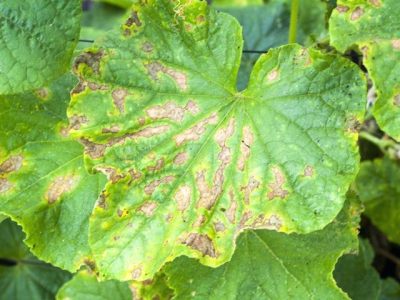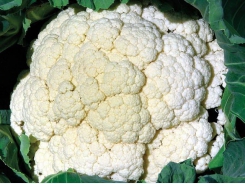Blight can make a bean crop worthless

Last week I mentioned that halo blight thrives in cooler conditions and spreads very rapidly in wet ones. Driving rain, people, tractors, hares, insects and birds can all spread bacterial diseases within a land and from land to land. Resistant cultivars are available, but in the case of halo blight separate genes are needed for protection on leaves and pods.
Infected pods have water-soaked lesions that ooze bacteria, making them unmarketable. But if the plant has the resistant gene for pod protection, pods may still be harvested, even if the leaves are infested. Of course, the yield will drop in proportion to the severity of the outbreak. Common blight is more active in warmer conditions. The most favourable conditions are temperatures in the upper 20s, and high humidity.
On the Highveld, early-season climatic conditions favour halo blight, and as midsummer approaches, they become more favourable for common blight. This lasts almost until winter. In subtropical areas, conditions are favourable for common blight for a large part of their growing season. The higher humidity also encourages the spread of the disease. Thunderstorm activity in the summer rainfall areas creates a good environment for this disease, and hail damage will greatly speed up infestation.
The bacterium which causes common blight also attacks pods. In this case, the symptoms start with a small, water-soaked lesion that becomes sunken and enlarged and develops a reddish colour. These lesions may also ooze bacteria. The lesions are most unsightly and even a low incidence will render the pods unmarketable.
Symptoms of common blight on the leaves start as water-soaked lesions which enlarge and become brown and irregularly shaped, with a light yellow border that is the trademark of bean bacterial diseases. The third bacterial bean disease is bacterial brown spot, which isn’t as common or as damaging as the other two blights. Humid, rainy, overcast weather favours this disease, which manifests as round, brown spots on the leaves, usually a few millimetres in diameter.
These are bordered by a much darker ring with a light halo around it. Pods develop small brown, sunken spots which will downgrade them, but one or two spots won’t render the pods unmarketable as with the other two blights. I’ve had only one outbreak in 17 years and was not sure of its source. Although this disease can be seed-borne, that isn’t usually the case. However, it is reported to carry over on certain weeds.
Related news
Tools

Phối trộn thức ăn chăn nuôi

Pha dung dịch thủy canh

Định mức cho tôm ăn

Phối trộn phân bón NPK

Xác định tỷ lệ tôm sống

Chuyển đổi đơn vị phân bón

Xác định công suất sục khí

Chuyển đổi đơn vị tôm

Tính diện tích nhà kính

Tính thể tích ao



 The Secret To Wildly Increasing Cucumber Yields
The Secret To Wildly Increasing Cucumber Yields  Soil pH – the cure for clubroot in…
Soil pH – the cure for clubroot in…